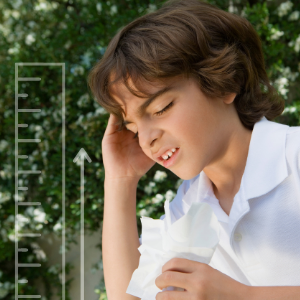
Why Do Children Have Pain?
Share
As a parent, I know there is little worse than seeing your child in pain. Not only is it emotionally taxing, it almost always leads to several questions and concerns.
The most obvious question is likely:
“What is causing this pain?”
But there may be multiple others:
“How do I help my child?”
“How can I prevent this from happening again?”
“Am I doing the right thing for my child?”
Lastly, depending on the circumstances, you may even question if their behaviour is truly the result of pain.
I decided to write this blog to help other parents at least have some food for thought when navigating through these nagging, sometimes stressful questions. Of course, this is not meant to replace medical advice; speaking to their pediatrician should always be the first course of action.
Pain is a complicated entity. But thankfully, the most common type of pain in children is benign (meaning not dangerous). This pain is commonly referred to as “Growing Pains.” About 25-40% of children experience these pains, and they usually arise at two different points in childhood: early (about 3 to 5 years of age) and later (about 8 to 12 years of age).

Unlike the name seems to imply, the pain experienced is not actually caused by bone growth; in fact, the cause is largely unknown. The most likely cause is muscle pain due to overuse (such as with running, jumping, climbing and playing other physical activities). Also unlike the name implies, growing pains are not the same as growth spurts.
The most common areas for growing pains are in the shins, calves, back of the knees and front of the thighs.
Classic characteristics of growing pains include:
- An aching or throbbing pain in the muscles (not in the joints).
- Occurs on both sides of the body.
- Usually starts in the late afternoon and are gone by morning.
- Sometimes the pain may wake the child up at night.
- The child does not necessarily have pain every day; it may come and go day-to-day.
- Sometimes growing pains last just a few minutes, other times they last a few hours.
Things to look out for and consider:
*It is also important to note that growing pains is a diagnosis of exclusion, meaning it is diagnosed AFTER other conditions have been ruled out. For example, joint pain is not associated with growing pains. Joints that are affected by more serious disease are swollen, red, tender and/or warm. Children who are experiencing growing pains will have joints that look normal. Another sign that your child may not be experiencing growing pains is that they do not like to be handled or touched as movement can aggravate the pain.
*Always look out for these other symptoms/signs in your child as it could mean something more serious than growing pains and should be assessed by a doctor:
- pain caused by injury
- pain is only on one side of their body
- pain is in the joints and/or the joint(s) or surrounding area(s) is/are red, swollen, warm, or tender
- pain happens often and/or interferes with normal activities
- pain lasts into the morning
- pain which is accompanied by: fever, limping, rash, weakness, fatigue, loss of appetite or unexplained weight loss
- long-lasting pain, or frequently recurring without association with increase in physical activity
- unusual behaviour
How to Help your Child with Growing Pains
Unfortunately, there is no real way to prevent or predict growing pains. But there are things you can do to help your child get through an episode of it.
Your doctor may suggest the following things which may help ease growing pains:
- gentle massage of the area
- gentle stretching
- placing a heat pack on the area (always wrap it in a towel/cloth to ensure the pack is not too hot)
- rest and reassurance
- acetaminophen (such as Tylenol) or an NSAID (such as Advil). (Do not give aspirin to a child or teen, as it has been linked to a rare but serious illness called Reye syndrome.)
Last but not least, give lots of cuddles and love! You can also apply Dr. D’s Super 7 topical ointment, an all-natural pain relieving cream, which is safe with adult supervision in children over 2 years of age.